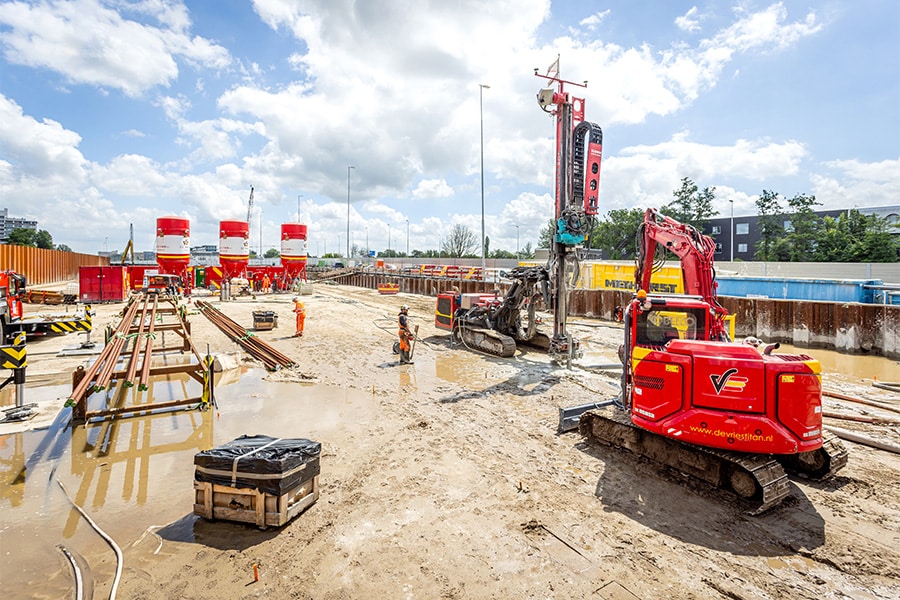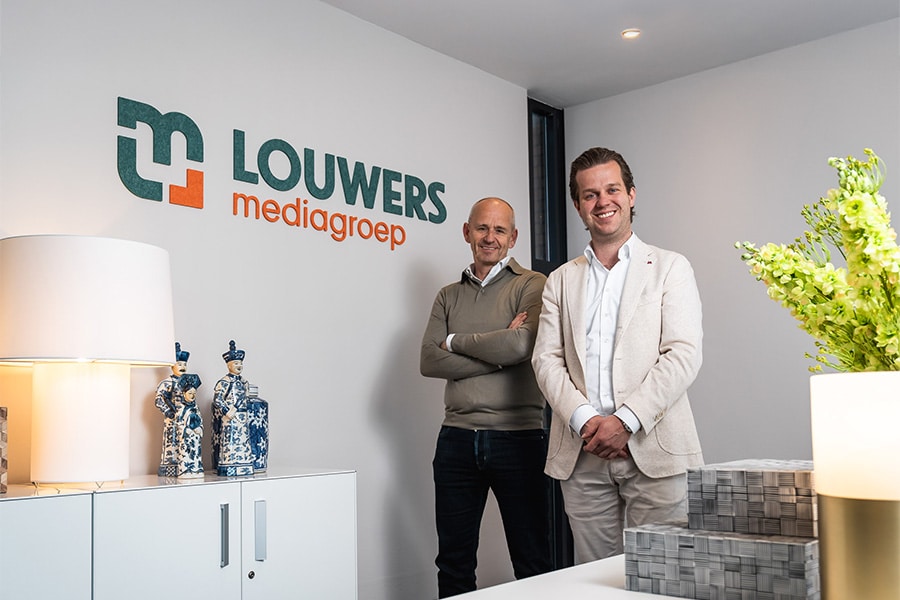
A Digital Twin Platform. Fast, complete and accurate simulations
A twin provides added value in the areas of testing, education & training and in the management & maintenance phase. With a Digital Twin we validate, among other things, the functional behavior of the system to be realized. This means accurate simulations of the various installations. By now it is clear that a Digital Twin saves a lot of failure costs. Because of this, you would prefer to have a quick, but also accurate replica of the object to be newly built or renovated.
The new Digital Twin platform, TWINSIGHT from Soltegro is a generic platform that makes the realization of a digital twin faster and therefore the cost of realization substantially lower. Franc Fouchier, Manager Systems Engineering & Innovation and Alexander van der Kolk, Software Architect at Soltegro update us on the virtual way of working that increasingly offers an affordable and important solution in the GWW.

A future-proof platform
Thanks to Soltegro's years of experience, the Digital Twin concept has evolved into a modular platform within Soltegro. Fouchier explains, "A Digital Twin is for any infrastructure object, where operation and control play an important role with regard to the integral cooperation of the various autonomous installations. During the realization process, it became clear that there are recurring issues that apply universally to many infra objects. Think of VTI (traffic technical installations) and TTI (tunnel technical installations), such as traffic control installations, CCTV and ventilation. Because we have now made it modular, we are able to group by functionality, improve maintainability and are able to support multiple projects. And at substantially lower costs. "
Library of modules and scenarios
This makes Soltegro's Digital Twin Platform future-proof. Van der Kolk: "We import an i/o list for the installations and BIM for the virtual environment. With these imports, we generate a 3D framework that can be used immediately. In addition, we have developed many simulation modules such as weather and traffic, day-night, flight behavior and video wall including camera streaming. But also the modules that test camera setups, automatically test your installations (FAT Tester) and the graphical interface for training operators. So by now we have built up a library of modules and scenarios that are plug-and-play connectable."
"Our strength lies in the knowledge of design, testing, operation and control. We know all the ins and outs of the installations and understand what the various (sub)systems have to do, we link the modules and thus create a Digital Twin that is fully customized to the object in question."

Broad commitment
Soltegro is involved in large infrastructure and multidisciplinary projects at the Department of Public Works. "For these projects we extend the OTAP (Development, Test, Application and Production) environments with our twin, to be used on the O, T and A environments," explains Van der Kolk. "In the VO (Preliminary Design Phase), the EMVI plans were verified and tested with the Digital Twin. Then, in the DO (Detail Design Phase), the virtual behavior in the Digital Twin was further elaborated and a link was made with the tunnel's actual control system to test it in the Digital Twin. Later, in the UO (Implementation Design Phase), the coupling was used to perform all system tests at an early stage. Thus, even before construction work began, each system was thoroughly tested and verified. As a result, the tunnel's software is of higher quality and contains fewer errors, which improves safety."
Fouchier adds, "Not only were the systems and installations tested in this way, the Digital Twin was also used to simulate the camera system, including a video stream. Which in turn can be used in training and education. The advantage is that the positioning of the cameras is determined in advance. This significantly reduces failure costs. The Digital Twin was also made available to all employees and stakeholders within the project. Thanks to the different layers of technology and functionality, the designers got a good overview of the project at an early stage, with more and more insights as the project progressed. As a result, errors in the design came to light early on and corrections were made."

Education & training system (OTS).
Van der Kolk: "This is an important development of our platform. In the OTS you see the power of everything coming together. We use the real HMI of the object with the real control software (3B) and simulate everything else. This simulation completely matches the real systems. We first used this in the Digital Twin for testing the software. So the road controller is trained in a simulated environment that is an exact copy of the real situation." Fouchier: "We really simulate the video camera images of the object and also the virtual cameras are movable. All those images are then displayed on the real video wall. The trainee will have to deal with random scenarios that are shown lifelike in the virtual world, feeding the platform with sensor information, for example malfunctions and alarms just like in the real world. The operator will hardly notice the difference from the real object. It is as if he is operating the physical object where anything can also happen."
Franc Fouchier concludes, "Rijkwaterstaat wants to unify and standardize object management. With this platform we are taking that first step towards standardization for a digital twin. By working with generic modules that can be used for many objects, we ensure that we do not have to develop everything from scratch for each object, which saves time and money."



